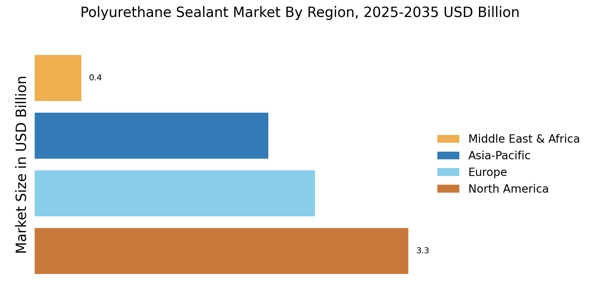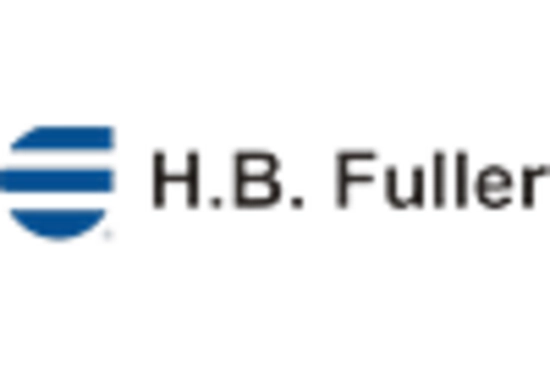Rising Construction Activities
The increasing construction activities across various sectors, including residential, commercial, and industrial, are driving the demand for the Polyurethane Sealant Market. As urbanization continues to expand, the need for effective sealing solutions becomes paramount. In 2025, the construction sector is projected to grow at a rate of approximately 5.5% annually, which is likely to enhance the consumption of polyurethane sealants. These sealants are favored for their durability and flexibility, making them suitable for a wide range of applications, from sealing windows and doors to waterproofing roofs. The Polyurethane Sealant Market is thus positioned to benefit significantly from this trend, as builders and contractors increasingly seek reliable materials that can withstand environmental stresses.
Growing Demand for Energy Efficiency
The push for energy-efficient buildings is becoming a critical driver for the Polyurethane Sealant Market. As energy costs rise and environmental regulations tighten, builders are increasingly adopting materials that enhance insulation and reduce energy consumption. Polyurethane sealants are known for their superior thermal insulation properties, which can help in minimizing energy loss. In 2025, it is estimated that energy-efficient construction will account for a substantial portion of new building projects, further propelling the demand for polyurethane sealants. This trend not only aligns with sustainability goals but also offers economic benefits to property owners, making the Polyurethane Sealant Market a key player in the energy efficiency movement.
Increased Awareness of Building Maintenance
The heightened awareness regarding building maintenance and longevity is emerging as a significant driver for the Polyurethane Sealant Market. Property owners and managers are increasingly recognizing the importance of using high-quality sealants to protect structures from moisture, air leaks, and other environmental factors. This awareness is leading to a greater emphasis on preventive maintenance, which in turn boosts the demand for polyurethane sealants. In 2025, the market is projected to see a rise in the use of these sealants in both new constructions and renovation projects, as stakeholders prioritize long-term durability and performance. Consequently, the Polyurethane Sealant Market stands to gain from this trend, as more consumers seek reliable solutions for building preservation.
Expansion of Automotive and Aerospace Industries
The expansion of the automotive and aerospace industries is playing a pivotal role in shaping the Polyurethane Sealant Market. As these sectors grow, the demand for high-performance sealants that can withstand extreme conditions is increasing. Polyurethane sealants are particularly valued in these industries for their excellent adhesion, flexibility, and resistance to harsh environmental factors. In 2025, the automotive sector is expected to witness a surge in the use of polyurethane sealants in manufacturing processes, contributing to the overall growth of the market. This trend indicates that the Polyurethane Sealant Market is not only relevant in construction but also in high-tech applications, thereby broadening its market reach.
Technological Innovations in Sealant Formulations
Technological advancements in sealant formulations are significantly influencing the Polyurethane Sealant Market. Innovations such as the development of low-VOC (volatile organic compounds) and eco-friendly polyurethane sealants are gaining traction among consumers and manufacturers alike. These advancements not only meet regulatory requirements but also cater to the growing consumer preference for sustainable products. In 2025, the market is expected to see a rise in the adoption of these innovative formulations, which could enhance performance characteristics such as adhesion, flexibility, and durability. As a result, the Polyurethane Sealant Market is likely to experience a shift towards more advanced and environmentally friendly products, appealing to a broader customer base.


















Leave a Comment